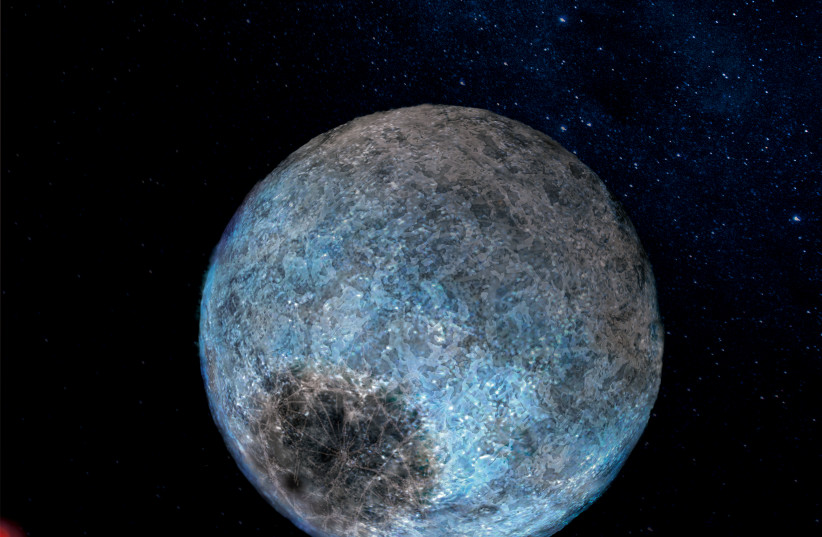Water is one of the most essential ingredients to all life on Earth, and as such is what scientists most often look for in habitable exoplanets. But it turns out that water-rich worlds are far more common in the Milky Way Galaxy than we first thought, a new study has found.
The findings of this study, published in the peer-reviewed academic journal Science, shed light on the prevalence of water in the universe, having potential game-changing consequences in the search for strange new habitable worlds.
Which planets have water on them?
Contrary to popular belief, it isn't surprising that water can be found outside the Earth. In fact, water is already surprisingly prevalent in the universe.
Even in our solar system, while extremely faint traces of water may be found in the atmospheres of other planets, there is likely considerable amounts of water on the many asteroids - in fact, some scientists speculate that asteroid impacts are what brought much of Earth's water in the first place.
Water can also be found on moons, with several moons in the solar system, such as Jupiter's moons of Ganymede and Europa, being suspected of containing rich amounts of water.
But what about other planets?
Contrary to popular belief, other planets have also been known to have water, though not necessarily planets in our solar system.
But how common is it? It turns out, a lot more common than we first thought.
How do scientists know what a planet is made of?
Studying exoplanets can be incredibly difficult. Exoplanets, which refers to planets outside the solar system, typically orbit stars. Stars, by their nature, are usually incredibly large and bright, making them relatively easy to spot. Planets, by contrast, are far less bright. In fact, the glare from their stars often obscures them, making it very difficult if not impossible to spot them.
Having said that, scientists still have ways to determine their existence.
Typically, this is done in two ways. Either they can see a very small shadow when a planet passes in front of its star, or they are able to detect the slight gravitational tug the planet has on its star.
This does not tell scientists what the planets look like, but it does give some information nonetheless.
Seeing the shadow of the planet can indicate the size, as in the diameter and not necessarily the total mass, of the planet. The gravitational tug, meanwhile, can indicate the mass but not the diameter.
Combining it together, it can tell if a planet is large and light, like a gas giant, or small but dense, like a rocky world.
Earth falls into the latter category.
These types of analyses have been done before by scientists, but usually just on individual planets, and not on a broader level. But that's exactly what these researchers did, taking a look at M-dwarfs, also known as red dwarf stars, one of the most common type of stars in the galaxy, and studying a total of 43 planets around them.
In doing so, the researchers found a considerable number of rocky worlds, but there was a catch. Much of these rocky worlds seemed a bit too light. Ordinarily, planets of this size that were made of pure rock would be much denser, but that wasn't the case here. There must be something else in the planet to keep it lighter, and one of the best candidates for that is water.
But there's a problem with that theory: It should be impossible.
Exoplanets orbiting red dwarf stars in the habitable zone tend to be closer to their star than we are to the Sun. Consequently, the planet surface is blasted with their star's heat, which in turn would mean that any water wouldn't be on the surface per se, but rather as gas that would make the planet seem much larger.
But that isn't happening here, so what is?
The answer likely lies underground.
In other words, the water isn't an ocean on the surface, but are either mixed into the rock or forming pools and oceans below the surface.
This isn't unprecedented - it's what scientists expect is happening on Europa.
These findings have considerable significance, as while they may not be signs of life, they do support previous theories about planetary formation. But unfortunately, the study isn't perfect. After all, while there is a lot of evidence supporting their hypothesis, they need more indisputable concrete proof that these planets have water.
Unfortunately, they aren't able to figure that out just yet, but that could change.
NASA's James Webb Space Telescope has capabilities that go far beyond other space telescopes, which enables far more detailed studies of exoplanets. This includes the possibility of seeing the chemical makeup of a planet based on how light reflects through it.
But time will tell if the NASA's James Webb Space Telescope will back up these theories.

